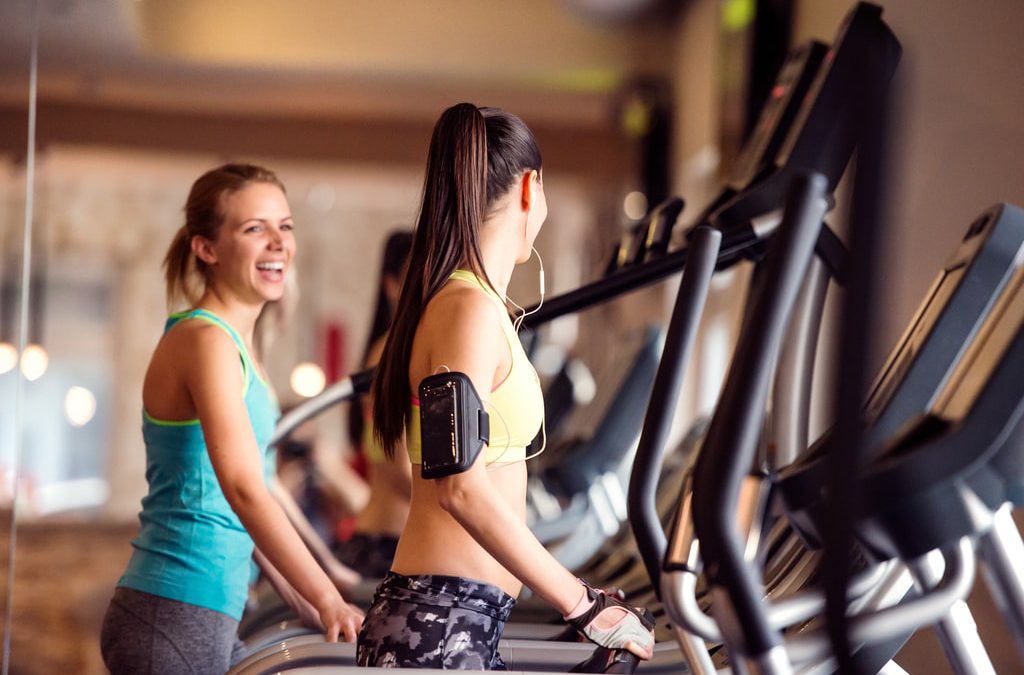How can regular fitness benefit women’s health?
Stress relief
Stress is linked to a number of health risks, including high blood pressure, stroke, and heart attacks. Regular exercise can be a powerful stress reliever for women at all life stages. Physical activity releases endorphins which can alleviate symptoms of anxiety and depression, and taking time out for yourself can kickstart a string of healthier choices that lead to better health outcomes.
Cardiovascular health
Heart disease is a leading cause of mortality for women worldwide. Doing regular exercise regulates blood pressure, improves circulation, and strengthens the heart muscle, significantly reducing your risk of cardiovascular disease.
Bone density
Osteoporosis affects women disproportionately, and this risk increases with age. One of the best ways to build and maintain bone density is weight bearing exercises which can include strength training but also includes bodyweight exercises, yoga, dancing, and resistance training.
Hormone support
Women have to contend with hormonal fluctuations from puberty to menopause, and this can have an impact on physical and mental health. Regular exercise and activity can help stabilise hormone levels and lower the impact of symptoms from menstrual cramps to perimenopause symptoms and more. Exercise may even help with conditions such as polycystic ovary syndrome (PCOS).
Women’s health issues and physical fitness
Women contend with numerous health issues throughout their lives, but there are some significant areas of concern that can be managed (or the risk reduced) by getting regular exercise.
Breast cancer risk
Studies have shown that physical activity can reduce women’s risk of breast cancer by as much as 20%*. Exercise helps with weight management, can regulate hormone levels, reduce inflammation, and boost the immune system.
Reproductive health
Regular exercise and maintaining a healthy weight can have a positive impact on fertility, reproductive health, and symptoms of the menstrual cycle, menopause, and endometriosis.
Wellness in pregnancy
Physical fitness plays a key role in healthy pregnancy, birth, and the post-partum period. Regular exercise in pregnancy has links with improved cardiorespiratory fitness, gestational weight gain control, prevention of urinary incontinence and low back pain, and reduced need for insulin in gestational diabetes**.
Can regular exercise reduce the risk of women’s health issues?
Whether you love going to the gym, enjoy running or team sports, or like to go for walks and stay active outdoors, there’s no denying that regular exercise is linked to improved health outcomes for women of all ages.
Regular physical activity can reduce your risk of certain illnesses, bring symptoms under control, and increase the likelihood of a strong, healthy, happy old age. From hormone health to breast cancer risk, to osteoporosis and weight management, to all the health considerations of fertility, pregnancy, birth and post-partum, regular exercise can quite simply boost your health outlook.
Physical fitness for healthier pregnancy and birth
Women often wonder if it’s OK to exercise during pregnancy, and – if so – what kind of exercise they should do. As any health professional will tell you, physical fitness during pregnancy is not only safe but highly recommended for most women.
Staying active during pregnancy contributes to a healthier pregnancy, often helps with an easier delivery, and can set you up for a healthier fourth trimester.
As for what kind of exercise to do during pregnancy, the advice is typically to stick to what you’re already doing. If you don’t already have an exercise routine, start doing gentle cardiovascular exercise (e.g. walking or swimming), some resistance training (e.g. weight training, yoga, Pilates), and pelvic floor exercises. Get the support of a fitness professional who has the relevant pregnancy qualifications.
Exercise advice for heart health in women
Coronary heart disease (CHD) is the biggest mortality risk for women around the world and in the UK. CHD occurs when the heart’s blood supply is blocked or by a build-up of fatty substances in the coronary arteries. Physical exercise can have a significant impact on lowering your risk of heart disease.
Exercise can strengthen the heart muscle just as it strengthens all the other muscles in your body. It can also help you manage your weight, reduce your risk of obesity, improve circulation, lower blood pressure and cholesterol levels. All of these things have a hugely positive impact on your heart health.
What is the best type of exercise for women’s health?
If you already exercise regularly – keep going. It’s one of the best things you can do for your current and future health and wellness. If you don’t exercise at the moment, think about how you can build more activity into your routine.
Remember that exercise doesn’t have to look the same for everyone. Gym workouts, fitness classes, team sports, or running might be great. But if they’re not for you (or not for you right now), that’s fine. The most important thing is being active and doing it consistently.
Try a few different forms of exercise to see what you enjoy and what you want to stick with. This might look different at various times of the year. And remember, exercise can absolutely include walking the dog, gardening, playing sports with friends or family at the weekend, wild swimming, paddleboarding, or getting back into a sport you liked as a girl.
Broadly speaking, it’s great to tick the boxes of cardiovascular exercise (things that elevate your heart rate), resistance training (things that work your muscles), flexibility and balance, and relaxing stress-relieving activities.
But don’t overthink it. Get started, get a little more active, and know that you’re doing great things for your health today, tomorrow, and in the future.
* Source: https://pubmed.ncbi.nlm.nih.gov/37788151/
** Source: https://pubmed.ncbi.nlm.nih.gov/23014142/




